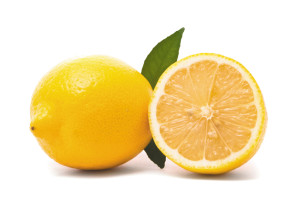Q. I’ve saved some of the seeds from some wonderful tomatoes I had last year. When would it be a good time to germinate the seeds, so I can transplant them in May?
A. You should allow six to eight weeks between sowing the seed and planting in the open ground. So, I’d plan on sowing the seed in March. Before starting the process you need to ask yourself the question: Is it worth the time and effort with saved seed? The obvious answer is yes. But if you saved the seed from a hybrid variety flower or vegetable, you’re going to be disappointed with the results. Hybrid seed varieties are unpredictable in the next generation. Ace, Early Girl, Champion, Big Boy, and Beefsteak are examples of hybrid tomatoes. The next year’s plants and tomatoes will be dissimilar to their parents. Genetics is the culprit. The seed saved from open pollinated or the heirloom varieties will mirror the parent plant in the next generation. If you’re not sure what you have, google “heirloom” or “hybrid tomato varieties” and see if you locate your variety from the list. If you don’t know the name, then lower your expectations, and plant a few named varieties so the season isn’t a total loss.
Before sowing the seed, check to see if the seed is viable. Viable seed means it is capable of germinating. This is easily accomplished by pouring the seed into a glass of water or a larger receptacle. You discard the seed that floats on the surface and plant those that sink. The viable seed is dried out by spreading it over a paper towel and covering it with a second sheet. The seed is sowed into a flat of pre-moistened potting soil; moist like a wrung-out sponge. With a pen or pencil, make furrows in the soil. Sow the seed in the rows and then cover the seed with soil. The flat is then covered with plastic to trap the moisture and heat. Once the seedling starts to emerge from the soil, remove the sheeting and place the flat in an area that gets morning sun. The seedlings are then transferred to individual pots when they have two sets of true leaves. Some gardeners prefer to sow seed directly into individual pots and there is nothing wrong with that. But, I prefer the other method as it allows me to select and cultivate the most vigorous seedlings to grow on.
May is an excellent time to plant tomatoes. They’re a warm season fruit/vegetable that requires even temperatures and for fruit, the nighttime temperatures need to be over fifty-five degrees. Many gardeners are anxious and plant early. With cool, damp, weather and or below normal temperatures in March and April, the early planted tomatoes struggle. You avoid the early season struggles by planting late. In most years, the late planted tomatoes produce just as soon as the early ones without the seasonal risk.
Q. I have a five-year-old healthy lemon bush that only produces lemons on the lower branches. There are no flowers or fruit in the upper two thirds of the lemon tree. How do I get lemons on the upper portion of this plant?
A. There is an important piece of information missing in solving this puzzle and that is the varietial name of the lemon. Dwarf lemons, except for Meyer Lemon, are budded or grafted onto a rootstock, which is a different plant. So, I’m going to assume that you have a Eureka or Lisbon Lemon. The rootstock is an aggressive grower. It typically will send rapidly growing shoots or suckers throughout the canopy of the desired variety. These shoots originate from below the ground or off the main trunk or stem, below the point from where it was budded or grafted. You can see this point with the naked eye. It’s a diagonal line on the trunk. The desirable portion is a green color while the rootstock is a dull tan or brown. In addition, you’ll find some extremely long, nasty looking thorns along with leaves in groups of three and this growth produces no flowers or fruit. This growth should be removed but all too often it is left on with the slower growing desirable portion being removed instead. This is what I believe has happened with your plant. This often happens after a particularly cold winter where there is a significant amount of damage to the desirable variety. In the spring, the rootstock takes off while the top growth is slowed in responding. What I would do is examine the plant closely and separate the fruiting section from the non-bearing part. After St. Patrick’s Day, I’d prune off the fruitless section. Next, you increase the fruit bearing growth by feeding monthly with Citrus Food—and be on guard for any additional suckers.

Leave a Reply